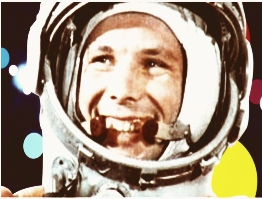
Photos by Jon Letman
Since the early 19th century, Russia and Japan have tussled over possession of this mountainous island which lies at the edge of both countries. Until the 19th century, some explorers mistook Sakhalin for a peninsula, understandable considering it’s nearly connected to the Russian mainland at one point looking like a miniature Kamchatka Peninsula that has broken off from the mainland.
At its closest point the northernmost tip of Japan is a mere 43 kilometers (27 miles) away. Sakhalin is 948 kilometers (589 miles) from north to south – roughly the distance from Portland, Oregon to San Jose, California.

With just 527,000 people occupying a land mass larger than Ireland, this fish-shaped island is no small catch. A wealth of oil, gas, coal, timber and enormous marine stocks, make Sakhalin an incredibly desirable territory. During the most recent and longest period of Japanese possession (1905–45), the island was demarcated at the 50°N parallel, with the southern part of the island claimed by the Japanese who called it Karafuto and the capital Toyohara.
Today the provincial capital Yuzhno-Sakhalinsk (called ‘Yuzhno’ or ‘Southern’ for short) is home to around one-third of the population and the hub of all commercial and cultural activity. After restrictions to Sakhalin were lifted in 1990, a trickle of curious travelers began visiting the island. As oil and gas development ramped up, more foreigners came to work in the energy business from places like Holland and England, Houston and Seattle.
Sakhalin itself was largely populated under a cloud of misery – first by Russians who used the desolate outpost as a penal colony and later, during the Second World War, by Koreans brought as laborers by the Japanese. After the war and Russia’s reclamation of the entire island, the Japanese and some Koreans left, but many stayed, hanging in diplomatic limbo for decades, but gradually assimilating into local society. Today Sakhalin has a sizeable population of ethnic Koreans.
For Muscovites (seven time zones away), Sakhalin has all the appeal and fame that Ni‘ihau enjoys in New York City. Indeed, Yuzhno is closer to Waikīkī than it is to Red Square. This hardly makes Sakhalin isolated, rather just oriented differently than most of Russia. Sakhalin is most easily reached from Seoul, Beijing, Sapporo and a handful of other cities.

[sidebar]

[/sidebar]
Sakhalin reveals its distinctly Asian orientation in a number of areas from the regional museum (resembling a Japanese castle) and major business ventures with companies like Mitsui and Mitsubishi to students, workers and tourists from neighboring Asian countries and the food in the markets (kimchi everywhere) and restaurants that serve ramen and sushi.
Consider this: on Sakhalin, east is also west. The Central Asian nations of Kazakhstan, Uzbekistan, etc. (the so-called ‘Stans’), seen in the West as “Oriental” cultures, all lie far to the west of the Russian Far East. Because a number of people have come to Sakhalin from places like Kyrgyzstan, Tajikistan and even further west (Azerbaijan, Dagestan), Sakhalin’s eastern influences are not strictly East Asian in composition.
During a recent visit (my third trip there), I asked my friend Viktoria who was born and raised in Yuzhno-Sakhalinsk if she felt it was reasonable to judge Russia by looking at Sakhalin.
“No. Not at all,” she said. Comparing Sakhalin to other parts of Russia simply doesn’t work. Primarily because of the oil and gas business Sakhalin has more exposure to and contact with foreign countries, be it Europe or Canada, Australia or Japan. There’s more money swishing around too. You see it in the fashion – Louis-Vuitton and Gucci, and in the pimped out Lexus hybrids and Mercedes SUVs rolling past Lenin Square and in trendy Czech beer bars.
Sakhalin residents tend to travel more than people from other parts of Russia, she said. It’s true. During a ten-day visit I met Sakhalin islanders who were just coming from (or getting ready to go to) Seattle, Bangkok, Bulgaria, Korea, Mexico, Siberia, Moscow and St. Petersburg. One friend of a friend who just returned from Italy told me she had been to Thailand more than eight times.
“To judge Russia by looking at Sakhalin,” Vika said, “is like looking at Hawai‘i and think ‘that’s the States.’”
To read more, check out Jon Letman’s feature Fishing For Russian Taboos in the TABOO issue of FLUX Hawaii, on stands now.

